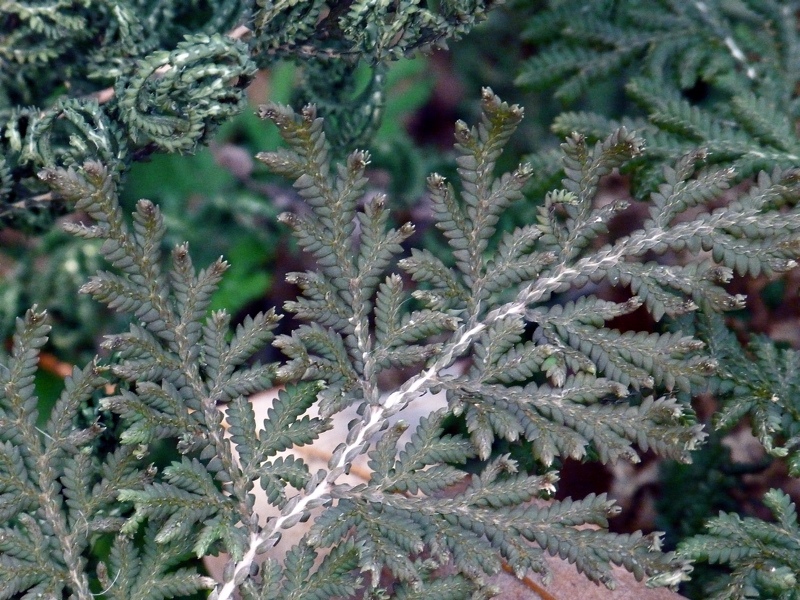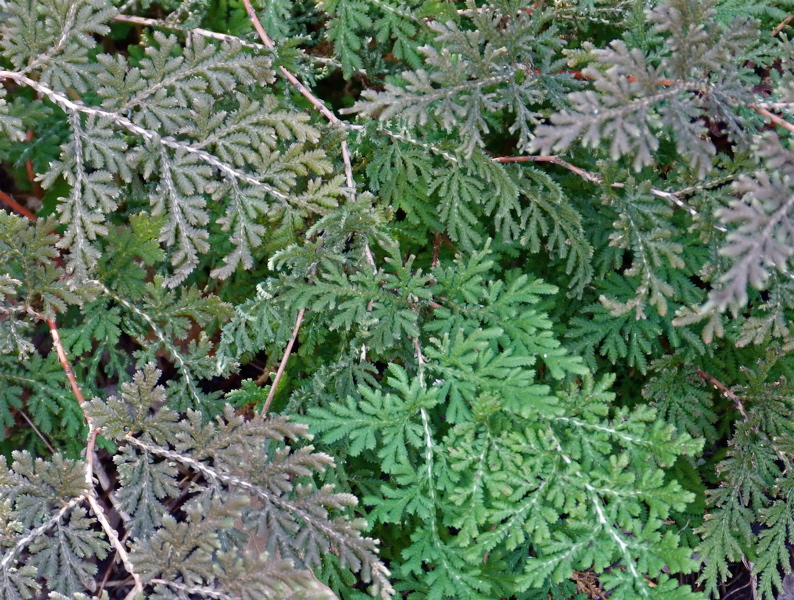From the Patio
 Thursday, May 5, 2011 at 5:00AM
Thursday, May 5, 2011 at 5:00AM I am done with planting, pruning, fertilizing, mulching, transplanting, and all the other garden chores of spring. That doesn't mean I have completed these projects. In fact, there are a couple of big jobs I haven't even started. It's always a race to get the heavy gardening completed before the heat arrives. I never get it all finished, but I am grateful for what I have accomplished. And now the first, relatively gentle, wave of our Deep South summer has come. I feel it in the humid, warm days, with temps well into the 80s. I see it in the plants, the spring blooms receding, the deep green taking over.
The great Southern Magnolia tree is blooming, a sign of summer's arrival.
Confederate Jasmine, Trachelospermum jasminoides, has taken over the former rose arch by the patio. Here is a view across the patio through the arch:
The sweet smell of the jasmine drifts upon the air. I like to sit in the shade of the big umbrella and take deep breaths of it.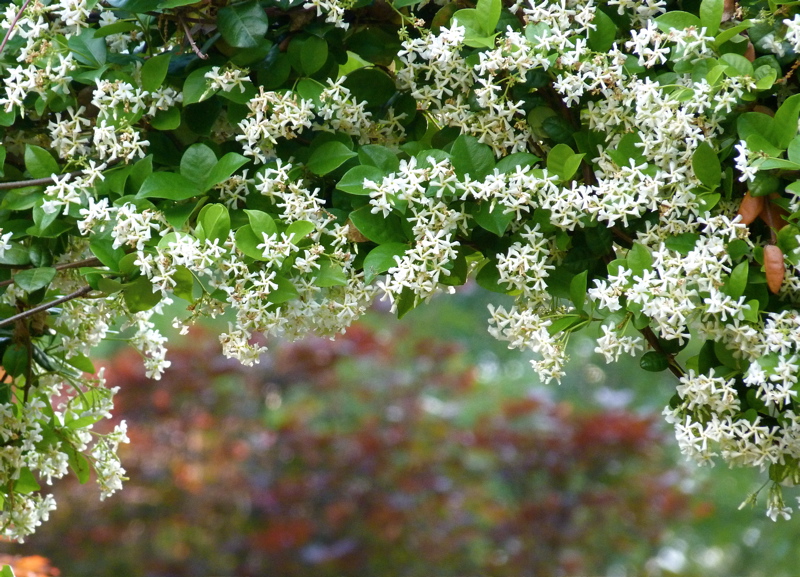 Near the arch is a candle-less lantern. (I put a candle in it when I first purchased it, but the summer heat soon completely melted the candle. It was a mess!) Behind the lantern is a large upright rosemary, which adds to the olfactory experience.
Near the arch is a candle-less lantern. (I put a candle in it when I first purchased it, but the summer heat soon completely melted the candle. It was a mess!) Behind the lantern is a large upright rosemary, which adds to the olfactory experience.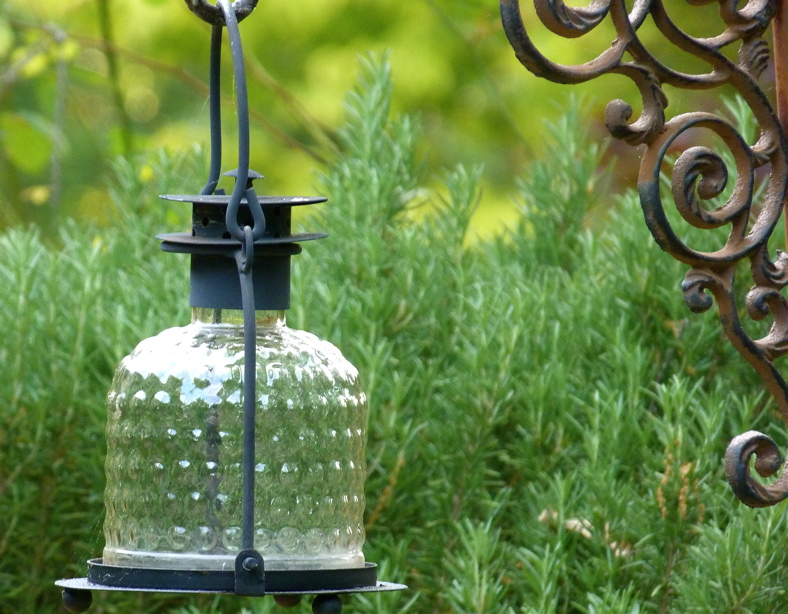
Another flower blooming near the patio in early May is Anthony Waterer spirea, a favorite low maintenance shrub. 
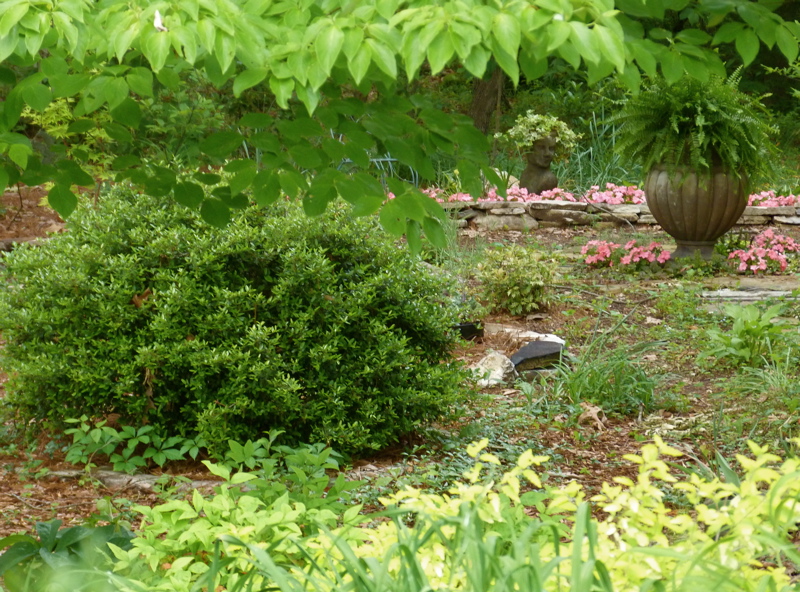
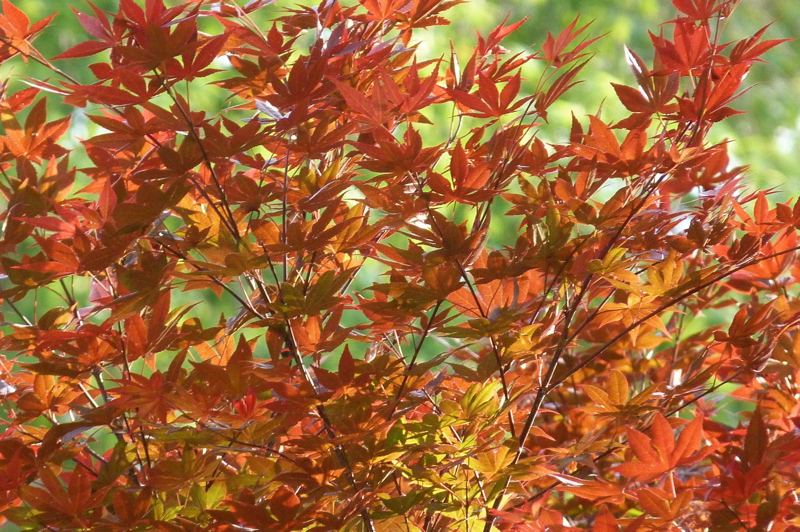
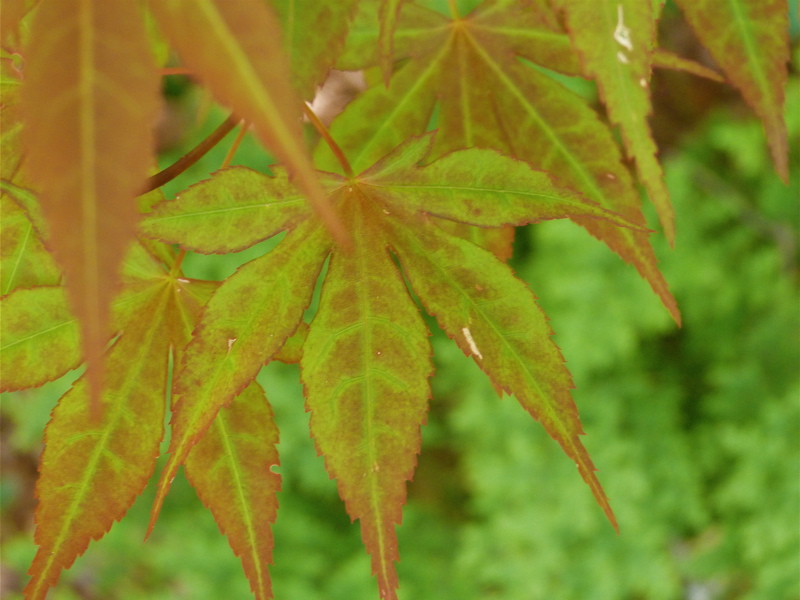
The lacy green leaves of a thread-leaf Japanese maple are also a delight. I love the feathery appearance of this small weeping tree.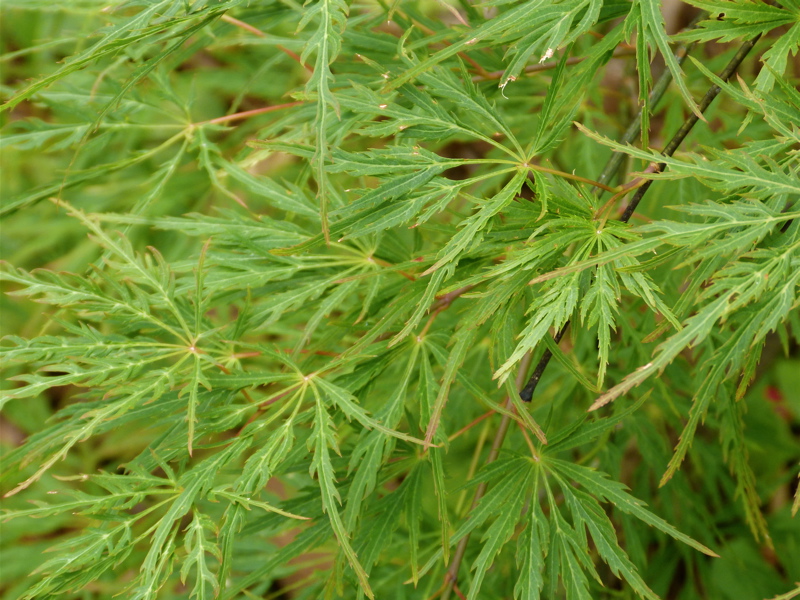
Arborvitae fern is lush with new green growth.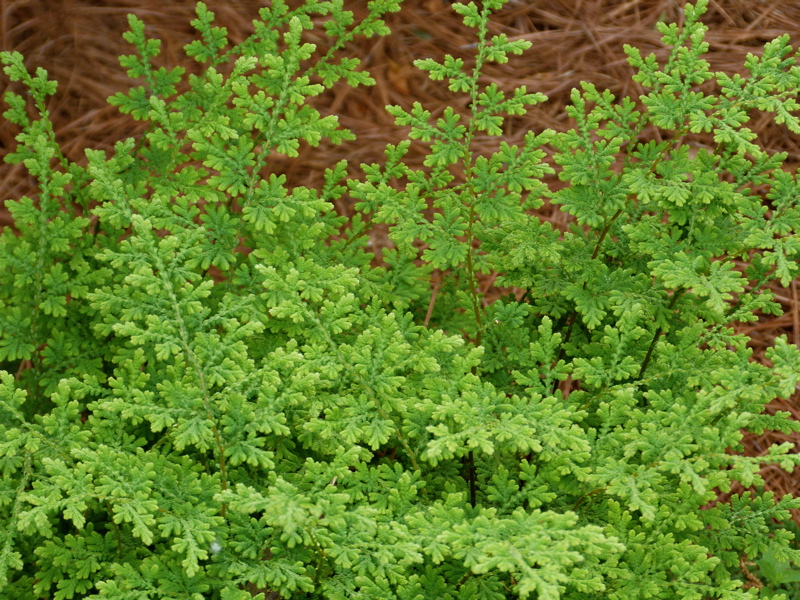
And the silver foliage of Powis Castle artemesia will provide a cool accent through the summer.
There is weeding to do - that's like washing clothes and doing the dishes - and there's the vegetable plot to tend to, but nevertheless most of the chores are put on hold till fall. So now I have more time to sit on the patio and enjoy the sights. It's a great place to listen to and observe birds and other wildlife. I was lounging there the other day, and this little green lizard ran by my feet, across the patio, then up a small tree by the house. These lizards are called green anoles. They are native to the southeastern USA and live in trees. Males have a red skin flap called a dewlap on their necks which they extend for territorial display and courtship.
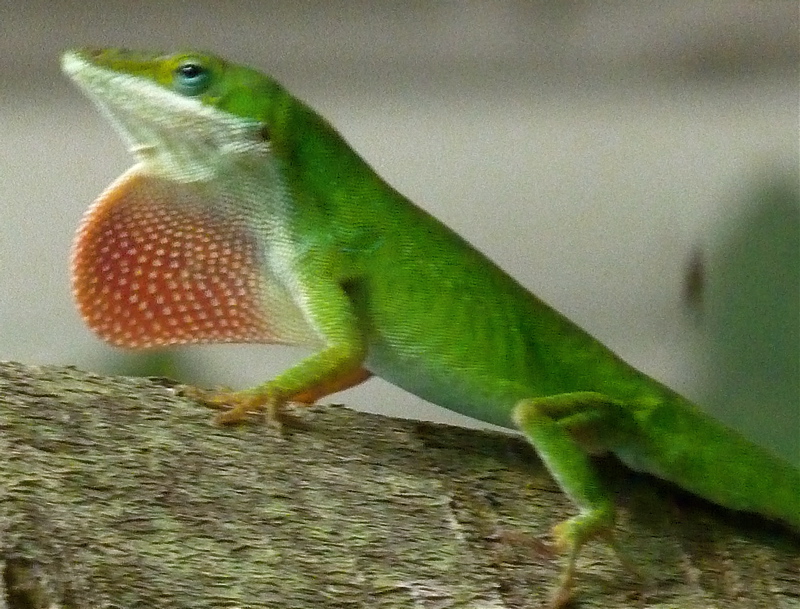
I think the green anole was eyeing a large green luna moth. Although its wing was a bit damaged, I was still impressed by its beauty. I know that lizards like to eat moths, but I think this one, which has a wing span of several inches, may be too much to swallow. I hope!
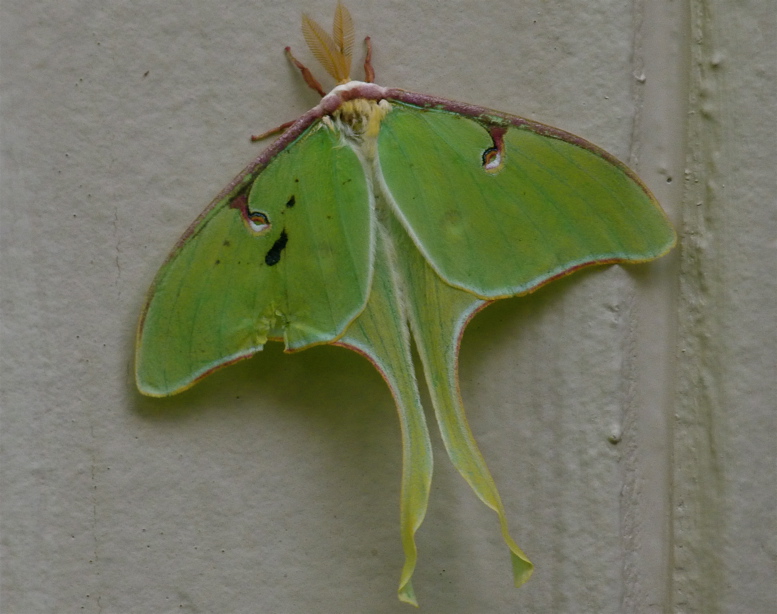
As I survey my comfy little world, I am reminded how fortunate I am that we were spared from the terrible tornadoes that ravaged Alabama and other southeastern states last week. For many, recovery will take a long, long time. My heartfelt prayers are with them and the tireless souls who work to bring relief and comfort. I recently posted about my visit to John's Native Nursery in Scottsboro. Check out the web site to see how these beautiful gardens came through the storm.
 Permalink
Permalink 